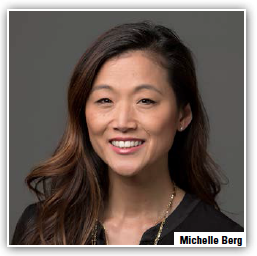Patient Advocacy in Rare Diseases
 Michelle Berg, VP of Patient Advocacy at Abeona Therapeutics, talks about the role biopharma companies can play in being a liaison between the scientific community and patients.
Michelle Berg, VP of Patient Advocacy at Abeona Therapeutics, talks about the role biopharma companies can play in being a liaison between the scientific community and patients.
PV: Why is patient advocacy important in rare diseases?
Berg: The role for pharmaceutical companies is to maintain strong relationships and provide solid, good, and clear communications. I see myself as an educator and conduit for communications going in both directions, from the company to the patient and from patients back to our researchers.Additionally, I serve as a voice for families, as well as in taking back information that is relevant to the rest of the team at Abeona.
In the rare disease space, it’s absolutely imperative to be patient-focused. I don’t know that a company can be successful in developing and bringing forth a therapy without the participation of patients, caregivers, or family members. As a company, we want to design and develop drugs that will be adopted and address the needs of patients.
PV: How can companies gain better insights into the biology of diseases to make a difference for millions of patients?
Berg: Stronger partnerships or collaborations with academic and government institutions conducting basic research need to grow along with highlighting the mutual benefits. Identifying and developing strong relationships with KOL physicians and genetic counselors will give additional access to understanding disease biology and creating stronger strategies for translating the science.
Companies must understand when to participate and when to lead the often challenging conversations and continue to support the involvement of different stakeholders. This likely means additional staff focused on these initiatives who are supported and educated, and prepared to help move individualized care forward. The tools are becoming better and more cost-effective and with that collaborations and policies must keep pace.
PV: How do you see the industry shifting its strategies to more fully encompass the needs and wants of patients?
Berg: The industry is responding to the needs of the patient communities by including them earlier in the drug development process and in more meaningful ways to understand important risk/benefit considerations, help develop clinical trials, and include their voice in the regulatory process. More direct interaction and participation in disease-based foundations and communities are becoming musts to prevent developing a therapeutic approach that has little to no adoption and keep potential consumers educated.
PV: How can pharmaceutical companies better bring patients into the R&D process?
Berg: Including families and patient communities in the process, such as through focus groups, is happening, but I think this can be done more specifically rather than by happenstance, for example by inciting participation within the different communities. To use an example, much of what I do is provide information or education. One of the ways I do this is by traveling to different foundation meetings or patient group gatherings to share information.
Additionally, it’s important that companies don’t wait until they are ready to launch a trial to gain patients’ perspectives. It’s important to consider the patients and the families early on so that the trial is designed to have achievable results.
PV: What are some best practices for working effectively with patient groups?
Berg: One best practice for companies would be to have as open communication as possible. As far as methodologies or tools, I do engage in one-on-one conversations, telephone calls, etc. I am happy to be available by Skype as well. I have found that direct human interaction brings a much stronger sense of understanding and communications, especially in the area of gene therapies.
With gene therapies, we’re all looking to see what the promise can deliver. We don’t know how long these therapies will last.
Part of that is managing expectations and sharing what the science is able to deliver. For patients who don’t have a strong understanding of what gene therapy is, it can sound very sci-fi. Explaining the terminology, conveying what the potential could be, and managing expectations can be challenging.
PV: Which other stakeholders are important to work with ?
Berg: We also have to consider healthcare providers as well; earlier diagnosis and earlier identification of rare diseases have a significant impact on what, when, and how drugs are developed. (PV)
Note: See this month’s feature article on rare diseases to learn more about this growing specialty market.










